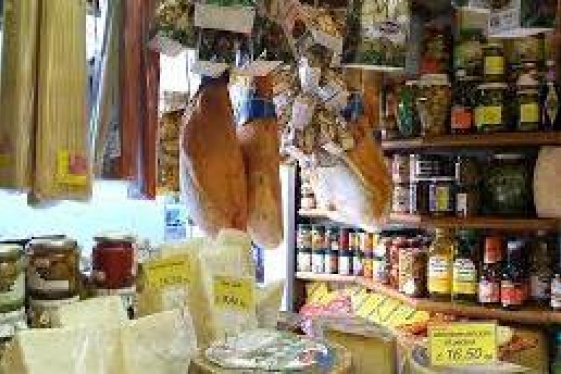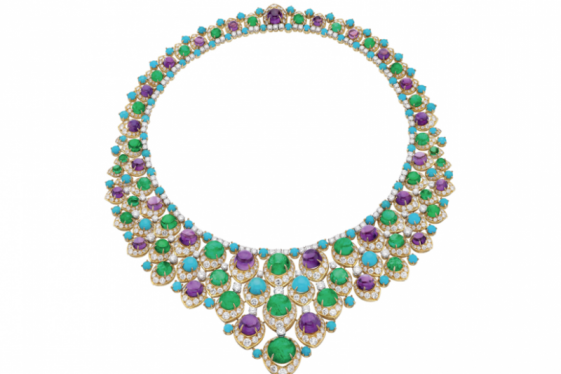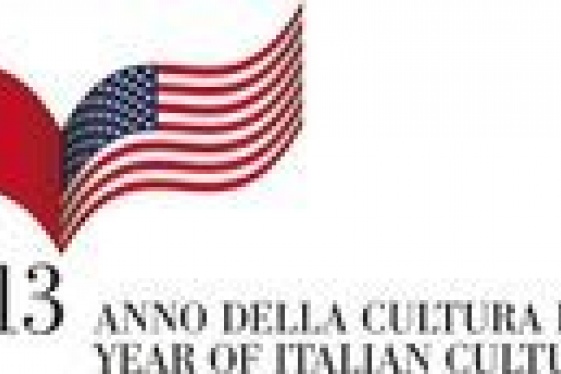

Italian cities, landscapes, works of art, Made in Italy products, creativity: they all revolve around beauty, which the whole world recognizes as the country's hallmark. The impression that Italy leaves may, at times, exceed reality, but the fact remains that beauty is manifested in the originality and attentive workmanship of Italian products, defined here as bello e ben fatto or BBF
(which means beautiful and well-made). This concept is further described by the the expression 'industrial craftsmanship' which could seem like a paradox, but is not.
So, what exactly is Italian BBF? This expression brings together a set of medium-high end consumer goods that are outstanding in terms of design, quality of materials and expert workmanship. More specifically, Exporting La Dolce Vita concentrates on BBF products in the food and beverage, furniture, apparel and home textiles, footwear, eyewear and jewelry sectors. Exporting La Dolce Vita analyses the growth prospects for the sales of BBF products in the most promising thirty new markets.
To measure the absorption capacity in these markets, the Confindustria Research Department and Prometeia have calculated the estimates of their imports of BBF products with the support of ANFAO, ANICA, Assocalzaturifici, Confindustria Alberghi, Federalimentare, FederlegnoArredo, Federorafi and SMI. The forecast interval range is 2015 to 2020. Imports represent a fairly reliable estimate of the domestic demand for these goods in such markets, since their capacity to produce them is still limited.
Italian exports of BBF products to the new markets are growing. This is a result of the expansion of their affluent classes, that is, the increasingly numerous group of people who are in an economic position to acquire BBF products. Such a growth in exports is also due to the successful strategies used by BBF-producing companies in order to tap into the needs of affluent customers. As a result, Italian BBF exports grew from 7 billion in 2010 to 11 billion in 2014. And the trend continues. In fact, by 2020 there will be 224 million more new wealthy people all over the world, as compared to 2014. These are individuals with an income greater than 35,000 dollars (at 2010 purchasing power parities). Half of them will live in the main cities of China, India and Indonesia, although this new affluent class is also expanding in countries closer to Italy, such as Turkey. In these economies, Italian products represent status symbols for consumers, based on the strength of celebrated brands but also on the appeal of Italy in general and the Made in Italy 'brand' in particular.
This increase in potential buyers will enable imports of BBF products from Italy to the new markets to rise from the 11 billion of 2014 to 16 billion in 2020 (all values are at 2013 prices and currency rates). This represents an increase of 45% in six years, 18 percentage points higher than the estimated trend for imports of BBF products from Italy to developed markets. The Emirates are the largest contributors to the increase in demand for Italian BBF products in the new markets, followed by China. Russia, which is losing its importance, comes third.
This remarkable growth result will be achieved if Italy defends its good competitive position in emerging markets, indicated by an average market share of over 7% in 2013 in BBF products. In 2020 the total BBF imports of new markets worldwide will reach 230 billion, up from the 152 billion of 2014. This figure represents the potential absorption capacity of BBF goods in these
countries.
The new estimates are more conservative than those calculated a year ago, since they include a more moderate growth scenario for most of the emerging countries. Despite this, the link between BBF producers and new markets is increasingly consolidating: the slowdown in the GDP growth rate in the new markets is in fact offset by the corresponding evolution of consumers, whose enhanced purchasing power makes them shift their preferences towards Italian BBF products.
In 2020 the imports of Italian Food and Beverage BBF products of the thirty new markets will reach 2.5 billion euro, 554 million more than 2014. Trade flows in this sector are still significantly influenced by geographical distance, to the extent that Polish imports will equal those of the whole Latin America (over 300 million). China, Poland and Russia will be the greatest contributors
to the growth of imports. In this sector, the hypothesis of a constant market share for Italy (the average share in the new markets was 4.5% in 2013) could prove to be overly cautious. Hence, it may be underestimating opportunities in countries that have recently entered the international circuit of the Italian BBF products, where Italian firms are gaining positions.
The imports of Italian BBF products in the Furniture sector in the thirty new markets will rise from 2.1 billion euro in 2014 to 3.3 billion in 2020, with the main contribution made by the Emirates and China. In 2020 the new markets will account for a third of the foreign sales in the sector. These estimates are based on the hypothesis that Italian supply keeps pace with demand in the various markets. This could be an optimistic assumption for certain markets, such as Russia and the Emirates, but overly cautious in other markets, first and foremost China, where the Italian market share is rapidly increasing.
The imports of Italian BBF Apparel of the thirty new markets will rise from 2.7 billion euro in 2014 to 3.7 billion in 2020, with 29% of this growing demand coming from Russia and 20% from China. Following them, in order of importance, are the Emirates, Poland and Turkey. The hypothesis of preserving Italian market shares in the emerging countries could prove optimistic for Russia. The opposite is true for China, where the Italian share has grown to more than 17% over the last five years reaching 17% in 2013.
In the thirty new markets, the imports of Italian BBF Footwear will reach 2 billion in 2020 with an increase of 684 million compared to 2014, including almost 259 million in Russia which, despite its difficulties, will continue to be the main outlet. For Russia, the signals emerged in 2014 make our assumption of constant Italian market share at the 2013 levels, optimistic. This is a symmetrically conservative assumption for many other new markets; where there are signs of a stronger Italian competitive position.
The new markets imports of Italian BBF Eyewear will rise by 2020 to 858 million euro from 534 million in 2014. China, Brazil and the Emirates will account for 40% of the increase with an additional 129 million imports. These are followed by nearer destinations, such as Turkey and Russia.
Defense of the competitive position in the new markets is definitely within reach of Italian enterprises, since the Italian 25% share has remained substantially stable over recent years. Italian exports of BBF Jewelry items to the thirty new markets will increase to 3.7 billion euro in 2020, 1.4 billion more than 2014. The Emirates will, by far, contribute the most to this increase,
since the trade flows in this sector are strongly influenced by the commercial hub of Dubai; the Emirates demand will increase by 974 million. China takes second place in the ranking, with an increase of 212 million. In 2013 the Italian share in the new markets amounted to 27%, substantially stable since 2009.
However, great opportunities do not spell easy access. The demand prospects of each market have to be accompanied by an assessment of the accessibility of the market, and therefore an accessibility index has been drawn up for Italian enterprises. The index is calculated for each of the six BBF sectors, since the degree of accessibility varies depending on the product. In the accessibility ranking of the thirty new markets, the Emirates are in the lead in all sectors, frequently followed by Malaysia and the European markets. Russia and China, which are two fundamental markets for Italian exports of BBF products, never are among the first ten for accessibility.
Tourists who come to Italy from emerging countries and Italian audiovisual products circulating abroad are both important vehicles for BBF promotion. In 2014, there were 1.14 billion trips abroad. That is exactly the same figure, again for 2014, as the number of people making up the affluent class worldwide, i.e. the pool of potential BBF consumers. This is more than just a statistical coincidence, because the two sets – tourists and wealthy consumers – partially overlap.
Visitors arriving in Italy from abroad represent a crucial opportunity for BBF enterprises because tourists have the occasion to know and consume italian goods during their stay. This is even more significant for the tourists coming from the new markets, where one of the factors frequently hindering the consumption of BBF products is the lack of knowledge of Italian products. Every year there are more than seven million visitors to Italy from these countries, with Russia, China and Brazil in the lead.
Entering the new markets is a major challenge for Italian small and medium enterprises (SMEs). Nevertheless, what we observed over the last six years, through analyses carried out for Exporting La Dolce Vita, is that many of SMEs have accomplished this challenge, succeeding in the face of conflicting forces that initially seemed insurmountable.
In a long-term perspective, some of the new markets (China, for instance, being just one of those) also represent a competitive arena for the best international competitors, and are places where it is possible to tap into trends that, even if only in terms of population dynamics, are destined to become global.
You may be interested
-
‘Fuggedaboudit’ the motto of new Italian del...
By Kimberly Sutton Love is what brought Tony Nicoletta to Texas from New York.The transpl...
-
“The Art of Bulgari: La Dolce Vita & Beyond,...
by Matthew Breen Fashion fans will be in for a treat this fall when the Fine Arts Museums...
-
1st Annual Little Italy Cannoli Tournament
Little Italy San Jose will be hosting a single elimination Cannoli tournament to coincide...
-
A Week in Emilia Romagna: An Italian Atmosp...
The Wine Consortium of Romagna, together with Consulate General of Italy in Boston, the Ho...
-
An Italian American Feast For Family Reunion...
Hey, come over here, kid, learn something. ... You see, you start out with a little bit of...
-
Buon Appetito! Unique Italian dining at Ragú...
There's something to be said for having your food prepared tableside. Guacamole tastes fre...
-
Chef Carmelo Mauro to host Beni Batasiolo Wi...
Fiorenzo Dogliani, owner of Beni di Batasiolo, will join Carmelo Mauro for an exclusive wi...
-
Cooking With Italian Red Wine
Wine has a long, rich history as a cooking liquid. One of the early "cookbooks," compiled...










